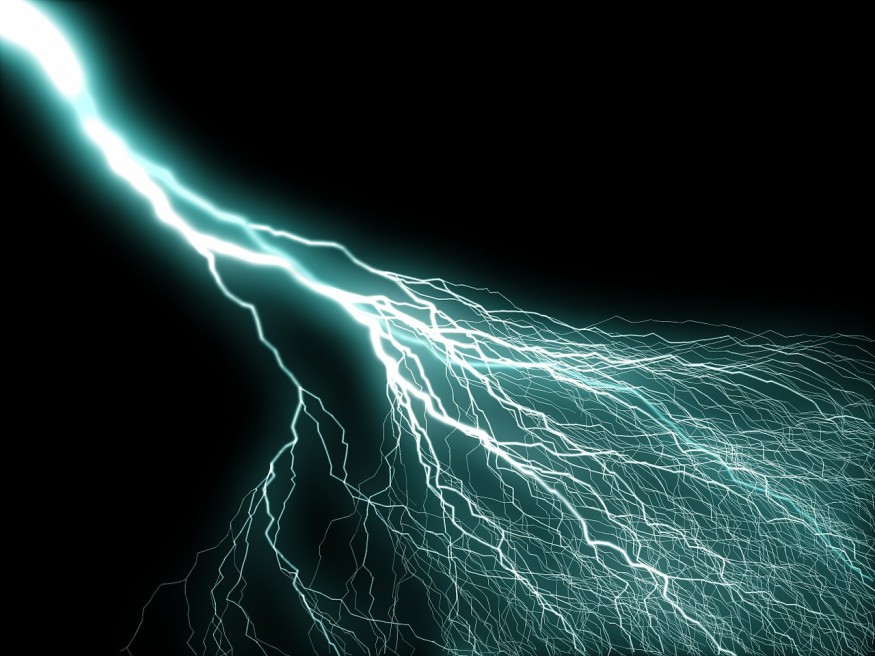A new analysis of historical measurements collected from a storm-chasing airplane in 2012 showed lightning has powerful air cleaning properties that can be an essential atmospheric cleanser.
According to a ScienceAlert report, the said data were initially thought to be precise. While some of lighting bolts' air-scrubbing qualities are already well-understood, specifically the creation of hydroxide and nitric oxide that can flush out different greenhouse gases from the sky, the new study specified that there are so much more "going on here."
Apparently, both lightning bolts and the weaker, unseen electrical charges surrounding them can generate the pollutant-catching oxidants hydroxyl or OH, and hydroperoxyl or HO2, which can eliminate gases like carbon monoxide methane from the atmosphere.
Penn State University meteorologist William Brune said, initially, they looked at this huge HO2 and OH signals present in the clouds and asked what's wrong with their instrument.
In answer to their own question, they assumed there was noise in the instrument, and thus, they eliminated the huge signals from the set of data and shelved them for later research.

Lightning Produces High Oxidant Levels
The said readings of 2012 were gathered from a NASA plane the flew over Oklahoma and Colorado, measuring the storm clouds' top portion.
Meanwhile, this new analysis, including the data gathered on the ground simultaneously, showed that the lighting was certainly producing these high oxidant levels.
A set of lab simulations backed up the notion that both visible lightning and the unseen electrical charges in their air cloud generate excessive amounts of hydroxyl and hydroperoxyl radicals.
Nevertheless, a similar Penn State News report said, in the air, they were able to detect slight to totally no additional nitric oxide and ozone generated from the type of lighting one can actually observe in the sky, and lab results were unclear or indeterminate on these molecules, as well.
Uncertainties in Data
It's worthy to bear in mind that most of the lightning bolts never hit the ground, although they are nonetheless "setting of a multitude of chemical reactions in the cloud."
Presently, the hydroxyl and hydroperoxyl generated by lighting are not included in the atmospheric exhibition, an omission that could be substantial.
Throughout history, explained Brune, humans were only intrigued by lightning bolts due to what they could do on the ground.
He added, now there is a growing interest in the weaker electrical charges in thunderstorms that result in lightning bolts.
There are many uncertainties in the data, the study authors admitted, mostly since their data is from a small part of the globe over a limited time frame, although they approximate that between two and 16 percent of worldwide atmospheric oxidation could result from lightning storms.
More Aircraft Measurements Needed
As the Earth gets warmer, lightning strikes and thunderstorms are possible to become more common, which in turn impact the greenhouse gases' balance in the air, probably much more than researchers had assumed up to this point.
Now that more about what's occurring is known, the next phase in this study will be to measure such impacts in places that are not Colorado and Oklahoma, and it seems possible, there are lots more to explore.
According to Brune, most thunderstorms are found in the tropics. The plain storms' entire structure is different compared to the tropics. Obviously, there is a need for more aircraft measurements to lessen such uncertainty.
This new study, Electrical Discharges Produce Prodigious Amounts of Hydroxyl and Hydroperoxyl Radicals, was published in the Journal of Geophysical Research: Atmospheres.
A related report is shown on TEDx Talks' YouTube video below:
RELATED ARTICLE : Survivors Describe What It Feels Like After Being Struck by Lightning
Check out more news info about the Lightning Strikes only on Science Times.
© 2025 ScienceTimes.com All rights reserved. Do not reproduce without permission. The window to the world of Science Times.










